
CONTACTAbout UsCAREER OPPORTUNITIESADVERTISE WITH USPRIVACY POLICYPRIVACY PREFERENCESTERMS OF USELEGAL NOTICE
© 2025 Equal Entertainment LLC.
All Rights reserved
All Rights reserved
By continuing to use our site, you agree to our Privacy Policy and Terms of Use.
We need your help
Your support makes The Advocate's original LGBTQ+ reporting possible. Become a member today to help us continue this work.
Your support makes The Advocate's original LGBTQ+ reporting possible. Become a member today to help us continue this work.
The Advocate:When and how did you realize you were headed for a creative life?
Peter De Potter: When I was little I didn't play much outside -- I wasted my time away drawing and making little scrapbooks at the kitchen table of my parents' house in the countryside. There wasn't much encouragement, but nobody ever disapproved either: as a child you do whatever comes naturally to you and nobody questions you -- for the time being. There is this ongoing discussion whether talent is something you possess or something that needs to be tutored, but in my experience I think it's more important that you come across the right examples at the right moment. People from the past or from the present that show you that all these little frilly things you're doing can actually lead to something grand and worthwhile -- this sheer notion of possibility. My defining moment came when I was 14, finding out about Andy Warhol, seeing these images of his Factory, unearthing the Paul Morrissey films. It was this perfect capsule that hit my little world, something I never recovered from -- luckily, I would say. There was this vibrant, unapologetic art and this striking, slightly sinister imagery, but on the same level, without distinction, there were these crazy girls, the naked boys, the slapdash drag queens, this uncompromising, strangely sweet music. Each element infecting the other, poisoning even, into this ... rush. I remember being jealous that I could never be part of it -- it was all over and very much done with by the time I found out about it. But I learned there was a visual language out there, a particular mind-set I could relate to and tap into. And it was an international, universally comprehensible language -- that mattered a lot because in those days the Internet wasn't even on the horizon yet.
The way you present the work in "Angelic Upstarts" seems so fresh and immediate. Do you labor over these images? Or do you just respond?
"Immediate" -- I take that as a big compliment. I want my art to be direct and speaking clearly, aimed at all the senses at the same time. Art shouldn't look labored or overwrought; the artist as the virtuoso, that's such an outmoded and dishonest notion. It's wrong when an artwork tries to wow the viewer with its technicalities or its bravura; not only does it make the artist look like a circus act, but, more importantly, it blocks any communication between the work and the audience.
The series "Angelic Starts" is basically a list of virtues. Some virtues might read like bad afterthoughts, while others might just seem obvious. But they're all very human, very modern, and very universal. The virtues are written all over male bodies -- the bodies functioning as statues, carrying the virtues with pride or with resentment, it depends. The list of virtues came first -- in order to finish the work I need to produce an image that fits the word or the sentence. And it can take a long time before one finds the other. I want the works in "Angelic Starts" to have both a glorious as well as an introspective quality. Not so much to point out the tension between those two things -- in fact, I'd like to illustrate that they very much can be the same thing.
There seems to be a suggestion that men present one way and have occult messages below the surface. Would you talk about how men present themselves? Masculinity?
In fact, in my work I don't really speak about masculinity. Instead I use it as a tool to convey emotions and thoughts and ideas that I try to make as universal as possible. At the same time I think that the male figure is strangely lacking in contemporary art -- and when he appears it's either in a strictly idealized, sexualized way or in a cynical, male-versus-female way. I think both of those options are quite passive. I want to bring a more emblematic male figure, more complex, more psychological.
Apart from what I do in my artwork, I'm quite intrigued by the way vanity has crept back into the mind of the regular guy in today's society. When you ask how men present themselves nowadays, I think you should take the word "present" quite literally here. We do live in a completely visual society, image and message are everything -- and contrary to women, men weren't used anymore to be gazed at, to be ranked or to be in the eye of the visual storm. The advent of the social network sites also heralded the concept of the profile picture: All of a sudden guys all over the world were forced to be their own homegrown PR machine. You would expect them to emphasize those "typical" male traits like status or cool factor in their self-representation, but instead you see guys flexing muscles again, showing a six-pack, flaunting their beauty. Especially the straight ones. In a way that's really fresh but the downside is that the male bimbo is now amongst us, well, at least in the visual culture. My Yes Darling picture was a direct response to that phenomena, trying to inject some humor back into it.
What has the experience been like sharing your work so freely on the Internet?
Putting my work on the Internet is both the most common and obvious gesture -- millions of us are posting images without giving it a second thought -- as well as an art practice in itself. I think it's important that artists share their work publicly instead of being obscure about it. And it also makes total sense because my work is very much about the Internet itself, the way we now live and breathe and communicate by means of images and homemade video, the impact it has on our minds and our hearts and our groins, the way we deal with new concepts like distance, webcam contact, the fact of being watched and judged 24/7.
What I post online are the Internet versions of my work; they obviously take on a different form in the "real" version. To some people it's not art precisely because it's presented on a site like Tumblr. Some people only respond to the guys in the images. Others pick up on the layered messages. I get all kinds of comments but always about the image itself, which pleases me to no end. Because it means that the work itself gets across, instead of the context or my own persona. Precisely by bringing my work in a context-free, reference-free place like an Internet page, people have no choice but to respond to the emotional charge of the image. Which is what I set out to do with my work.
How do you know you have an image you want to work with? Tell us about your hunting process.
It might not be too clear now -- I've only been showing a few series -- but collecting and archiving is a huge part of what I do. Ever since the social network sites appeared there has been an avalanche of new imagery, millions of millions of new ones every day. They speak of the now and they show a very detailed image of the world's psyche. But of course it's the task of the artist to make some sort of sense of it all, to edit or redirect or whatever you want to call it. Every artist takes from his surroundings -- the Internet happens to be my most familiar one. I look at it as a form of archaeology. Saving certain images from oblivion. And giving them an appropriate platform. At the same time I make my own photographs, but I've noticed that most people can't tell them apart from the appropriated images. That's perfectly fine. Every image I work with should already have an emotional resonance before I even touch it. Because I think that's the most important ingredient. I mean, you can really like the composition of a picture or its colors, or the scene depicted on it might appeal to you. But that's only your mind responding. But when an image gets to you emotionally or sexually as well, then you can fall in love. And don't we all want that? Peter De Potter (born 1970) studied at the Royal Academy of Fine Arts in Antwerp, Belgium, from 1988 to 1992. Since 1996 he has written for both Belgian and international publications.
Besides his writing he is involved in varied projects, which have included the exhibitions "The Fourth Sex" (Pitti Immagine, Florence, Ita;y, 2003); "Excess" (Pitti Immagine, Florence, 2004); and "Transmission 1-- Avant/Garde Diaries" in Berlin (July of this year).
He was curator of "NEO80" (Pitti Immagine, Florence, 2004), where his video installation The Young Gods was shown.
He has collaborated with Raf Simons since 2001; his work has been used on clothing, invitations, and publications.
De Potter's work is published in various magazines, including Doingbird, Dust, Beople, Arena Homme Plus, Another Magazine, and Atmosphere.
Peter De Potter: When I was little I didn't play much outside -- I wasted my time away drawing and making little scrapbooks at the kitchen table of my parents' house in the countryside. There wasn't much encouragement, but nobody ever disapproved either: as a child you do whatever comes naturally to you and nobody questions you -- for the time being. There is this ongoing discussion whether talent is something you possess or something that needs to be tutored, but in my experience I think it's more important that you come across the right examples at the right moment. People from the past or from the present that show you that all these little frilly things you're doing can actually lead to something grand and worthwhile -- this sheer notion of possibility. My defining moment came when I was 14, finding out about Andy Warhol, seeing these images of his Factory, unearthing the Paul Morrissey films. It was this perfect capsule that hit my little world, something I never recovered from -- luckily, I would say. There was this vibrant, unapologetic art and this striking, slightly sinister imagery, but on the same level, without distinction, there were these crazy girls, the naked boys, the slapdash drag queens, this uncompromising, strangely sweet music. Each element infecting the other, poisoning even, into this ... rush. I remember being jealous that I could never be part of it -- it was all over and very much done with by the time I found out about it. But I learned there was a visual language out there, a particular mind-set I could relate to and tap into. And it was an international, universally comprehensible language -- that mattered a lot because in those days the Internet wasn't even on the horizon yet.
The way you present the work in "Angelic Upstarts" seems so fresh and immediate. Do you labor over these images? Or do you just respond?
"Immediate" -- I take that as a big compliment. I want my art to be direct and speaking clearly, aimed at all the senses at the same time. Art shouldn't look labored or overwrought; the artist as the virtuoso, that's such an outmoded and dishonest notion. It's wrong when an artwork tries to wow the viewer with its technicalities or its bravura; not only does it make the artist look like a circus act, but, more importantly, it blocks any communication between the work and the audience.
The series "Angelic Starts" is basically a list of virtues. Some virtues might read like bad afterthoughts, while others might just seem obvious. But they're all very human, very modern, and very universal. The virtues are written all over male bodies -- the bodies functioning as statues, carrying the virtues with pride or with resentment, it depends. The list of virtues came first -- in order to finish the work I need to produce an image that fits the word or the sentence. And it can take a long time before one finds the other. I want the works in "Angelic Starts" to have both a glorious as well as an introspective quality. Not so much to point out the tension between those two things -- in fact, I'd like to illustrate that they very much can be the same thing.
There seems to be a suggestion that men present one way and have occult messages below the surface. Would you talk about how men present themselves? Masculinity?
In fact, in my work I don't really speak about masculinity. Instead I use it as a tool to convey emotions and thoughts and ideas that I try to make as universal as possible. At the same time I think that the male figure is strangely lacking in contemporary art -- and when he appears it's either in a strictly idealized, sexualized way or in a cynical, male-versus-female way. I think both of those options are quite passive. I want to bring a more emblematic male figure, more complex, more psychological.
Apart from what I do in my artwork, I'm quite intrigued by the way vanity has crept back into the mind of the regular guy in today's society. When you ask how men present themselves nowadays, I think you should take the word "present" quite literally here. We do live in a completely visual society, image and message are everything -- and contrary to women, men weren't used anymore to be gazed at, to be ranked or to be in the eye of the visual storm. The advent of the social network sites also heralded the concept of the profile picture: All of a sudden guys all over the world were forced to be their own homegrown PR machine. You would expect them to emphasize those "typical" male traits like status or cool factor in their self-representation, but instead you see guys flexing muscles again, showing a six-pack, flaunting their beauty. Especially the straight ones. In a way that's really fresh but the downside is that the male bimbo is now amongst us, well, at least in the visual culture. My Yes Darling picture was a direct response to that phenomena, trying to inject some humor back into it.
What has the experience been like sharing your work so freely on the Internet?
Putting my work on the Internet is both the most common and obvious gesture -- millions of us are posting images without giving it a second thought -- as well as an art practice in itself. I think it's important that artists share their work publicly instead of being obscure about it. And it also makes total sense because my work is very much about the Internet itself, the way we now live and breathe and communicate by means of images and homemade video, the impact it has on our minds and our hearts and our groins, the way we deal with new concepts like distance, webcam contact, the fact of being watched and judged 24/7.
What I post online are the Internet versions of my work; they obviously take on a different form in the "real" version. To some people it's not art precisely because it's presented on a site like Tumblr. Some people only respond to the guys in the images. Others pick up on the layered messages. I get all kinds of comments but always about the image itself, which pleases me to no end. Because it means that the work itself gets across, instead of the context or my own persona. Precisely by bringing my work in a context-free, reference-free place like an Internet page, people have no choice but to respond to the emotional charge of the image. Which is what I set out to do with my work.
How do you know you have an image you want to work with? Tell us about your hunting process.
It might not be too clear now -- I've only been showing a few series -- but collecting and archiving is a huge part of what I do. Ever since the social network sites appeared there has been an avalanche of new imagery, millions of millions of new ones every day. They speak of the now and they show a very detailed image of the world's psyche. But of course it's the task of the artist to make some sort of sense of it all, to edit or redirect or whatever you want to call it. Every artist takes from his surroundings -- the Internet happens to be my most familiar one. I look at it as a form of archaeology. Saving certain images from oblivion. And giving them an appropriate platform. At the same time I make my own photographs, but I've noticed that most people can't tell them apart from the appropriated images. That's perfectly fine. Every image I work with should already have an emotional resonance before I even touch it. Because I think that's the most important ingredient. I mean, you can really like the composition of a picture or its colors, or the scene depicted on it might appeal to you. But that's only your mind responding. But when an image gets to you emotionally or sexually as well, then you can fall in love. And don't we all want that? Peter De Potter (born 1970) studied at the Royal Academy of Fine Arts in Antwerp, Belgium, from 1988 to 1992. Since 1996 he has written for both Belgian and international publications.
Besides his writing he is involved in varied projects, which have included the exhibitions "The Fourth Sex" (Pitti Immagine, Florence, Ita;y, 2003); "Excess" (Pitti Immagine, Florence, 2004); and "Transmission 1-- Avant/Garde Diaries" in Berlin (July of this year).
He was curator of "NEO80" (Pitti Immagine, Florence, 2004), where his video installation The Young Gods was shown.
He has collaborated with Raf Simons since 2001; his work has been used on clothing, invitations, and publications.
De Potter's work is published in various magazines, including Doingbird, Dust, Beople, Arena Homme Plus, Another Magazine, and Atmosphere.
xtyfr
From our Sponsors
Most Popular
Bizarre Epstein files reference to Trump, Putin, and oral sex with ‘Bubba’ draws scrutiny in Congress
November 14 2025 4:08 PM
True
Jeffrey Epstein’s brother says the ‘Bubba’ mentioned in Trump oral sex email is not Bill Clinton
November 16 2025 9:15 AM
True
Watch Now: Pride Today
Latest Stories
Far-right, anti-LGBTQ+ Project 2025 will continue into 2026
December 24 2025 6:34 PM
Democratic officials sue RFK Jr. over attempt to limit gender-affirming care for trans youth
December 24 2025 4:30 PM
Heated Rivalry season 2: Everything we know so far
December 24 2025 3:30 PM
Lillian Bonsignore will be first out gay Fire Department of New York commissioner
December 23 2025 6:21 PM
The HIV response on a cliff-edge: advocacy must drive urgent action to end the epidemic
December 23 2025 2:23 PM
CECOT story pulled by Bari Weiss gets viewed anyway thanks to Canadian streaming service
December 23 2025 2:05 PM
Burkina Faso issues first sentence for 'homosexuality and related practices'
December 23 2025 2:02 PM
Transgender NSA employee files discrimination lawsuit against Trump administration
December 23 2025 12:03 PM
Billy Porter is set to make a 'full recovery' from sepsis
December 23 2025 11:54 AM
Soccer stars Rafaelle Souza and Halie Mace are engaged & the video is so adorable
December 23 2025 10:52 AM
What is 'hopecore' and how can it make life better for LGBTQ+ people?
December 23 2025 10:00 AM
Santa Speedo Run 2025: See 51 naughty pics of the festive fundraiser
December 23 2025 6:00 AM
Instructor who gave U of Oklahoma student a zero on anti-trans paper removed from teaching
December 22 2025 9:36 PM
All about the infamous CECOT prison — on which CBS's Bari Weiss pulled a story
December 22 2025 7:27 PM
Chest binder vendors respond to 'absurd' FDA warning letter: 'Clearly discrimination'
December 22 2025 3:16 PM
Gay NYC Council member Erik Bottcher drops U.S. House bid, will run for state Senate instead
December 22 2025 2:03 PM
Massachusetts removes rule requiring foster parents to support LGBTQ+ youth
December 22 2025 12:55 PM
Dave Chappelle defends Saudia Arabia set: Trans jokes 'went over very well'
December 22 2025 12:33 PM
Texas judge who refused to officiate same-sex weddings sues to overturn marriage equality
December 22 2025 11:41 AM
At 50, passing isn’t the goal. Living is
December 22 2025 6:00 AM
Trending stories
Recommended Stories for You
Christopher Harrity
Christopher Harrity is the Manager of Online Production for Here Media, parent company to The Advocate and Out. He enjoys assembling online features on artists and photographers, and you can often find him poring over the mouldering archives of the magazines.
Christopher Harrity is the Manager of Online Production for Here Media, parent company to The Advocate and Out. He enjoys assembling online features on artists and photographers, and you can often find him poring over the mouldering archives of the magazines.



























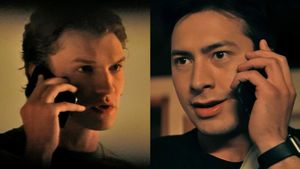

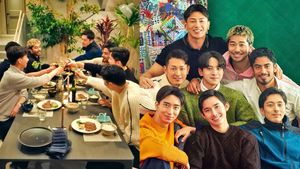





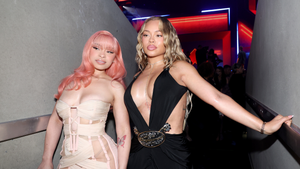


























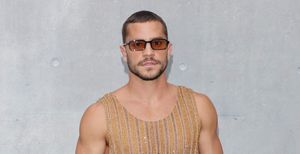


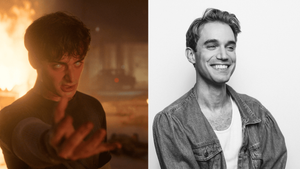

Charlie Kirk DID say stoning gay people was the 'perfect law' — and these other heinous quotes